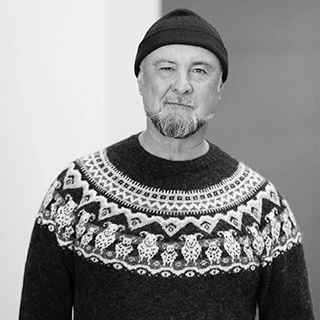To Hell Gate
Kahnawake widows and women gather. Wise and wizened. A tradition of women to set the rules:
Never again will all our men work on a single project. They will boom out.
Out past the ice-booms of Lake Erie cities. Out past Huron, Superior, Michigan, and Ontario.
Out past the Palisades and straits.
Diabo (once D’Aillaboust) travels down the Hudson for work. Joins the Hell Gate crew, beginning
a Mohawk migration to
Ka’nón:no – Splint trees in the water. A city on stone.
But how have we come—from Red-shouldered Hawk to Hell Gate?
Where, the fisher? The Acadian flycatcher, black bear, bobcat? The owl and Ovenbird?
If river is timeline,
we have come from Atiron:tak from the forests and mountains
from the Bark-eaters to a place beyond the pastoral.
Copyright © 2025 by James Thomas Stevens. Originally published in Poem-a-Day on November 4, 2025, by the Academy of American Poets.
“This poem is one piece in a long poem written in collaboration with artist-photographer Lee Jaffe and musician Dickie Landry. I was approached by them to write a poem about the Hudson River and the George Washington Bridge for its upcoming one hundredth anniversary. They specifically wanted a Mohawk view. I began by writing about the Mohawk migration to New York City that began after the disaster of the 1907 Quebec Bridge collapse, which killed thirty-three Mohawk men from the same community of Kahnawake. John Diabo was the first ironworker to travel down the Hudson [River] to work on the Hell Gate Bridge over the East River.”
—James Thomas Stevens

